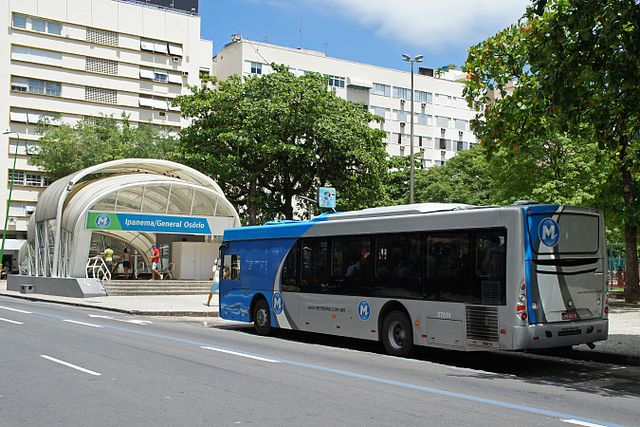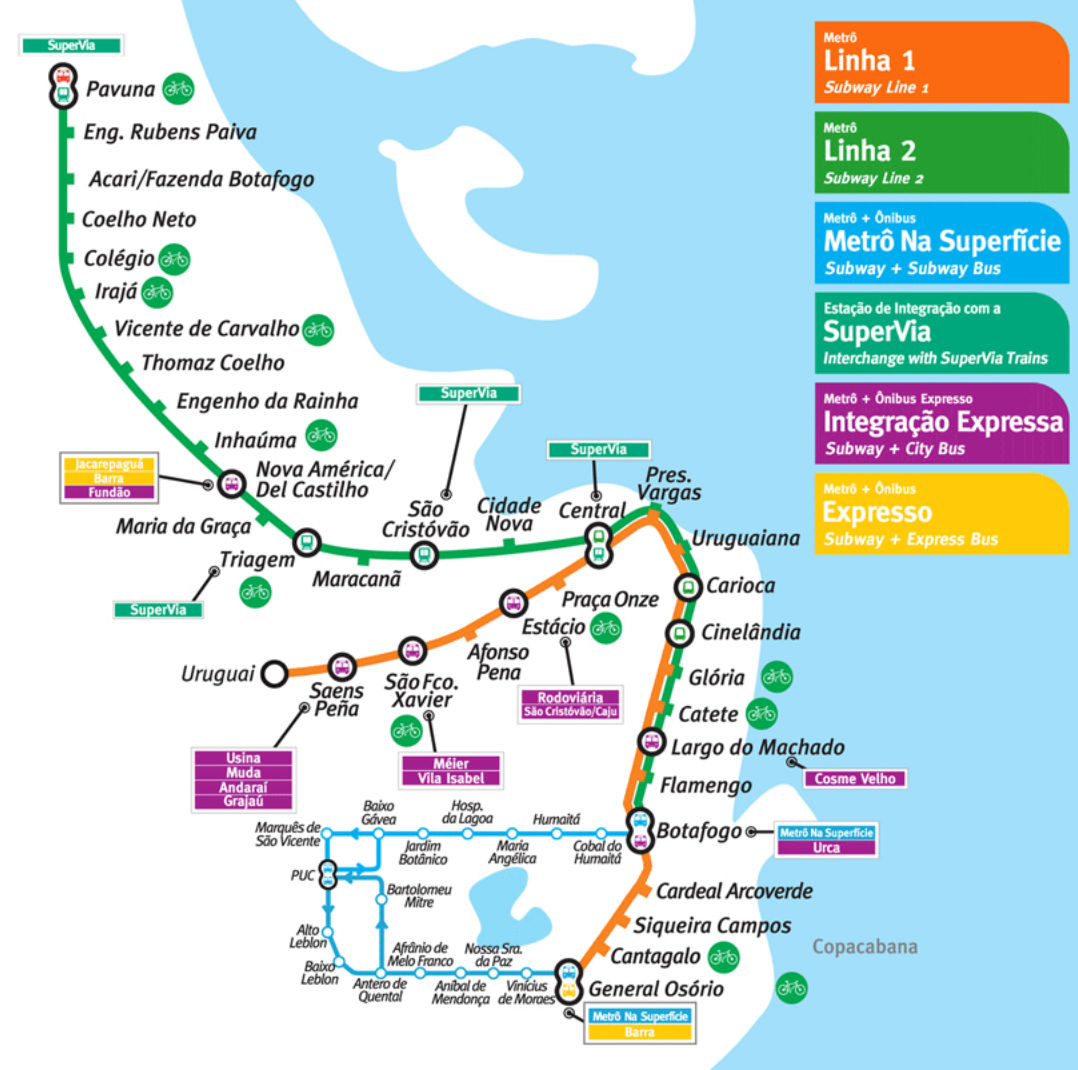Rio de Janeiro Buses
What visitors need to know about using the bus system in Rio

Rio de Janeiro's bus system consists of a vast network with nearly 1000 bus routes provided by a myriad of different operators, but coordinated by Vá de Ônibus (This link only works in Brazil). Fortunately, as a tourist you will only need to use a very small portion of this massive bus network. Below we narrow the information down to the basic things you must know when you find you want to visit an attraction that is beyond the scope of the metro system.
If you look at the MetroRio map below it shows 3 types of bus service that are integrated with the Metro system. It is important that you know and understand the differences in these 3 types of service and how the fares work as well. For all of the tourist attractions that are beyond a reasonable walking distance from a metro station, we also include specific information on which bus or other transit to take to complete your journey. This information can be found by clicking on the 'Map and Directions' tab on the page for any attraction listed in our Things-to-do section.
The 3 main categories of bus service that you will see on the map below are Subway + Subway Bus, Subway + City Bus and Subway + Express Bus. Below, we explain the difference between each option and the most common uses by visitors to the city.
Subway + Subway Bus
These buses are owned and operated by Metro Rio to provide a convenient extension to the metro and their price is included in the subway fare. These buses are useful for exploring either the north or south side of the Rodrigo de Freitas Lagoon and also for visiting the Rio de Janerio Botanical Garden. You can transfer to these buses outside of General Osório Station at the south end of Line 1 and at Botafogo Station on Lines 1 and 2.
The Subway buses are blue and white in color and they only stop at designated stops, not at every bus stop along their route. The designated stops are clearly signed with large signs that have a schematic diagram of the entire root.
If you start your trip on the bus and pay a cash fare the employee at the turnstile will give you a unitary fare card for the metro which must be used within 2 hours and only at the station the bus connects with. If you pay to board the bus with a prepaid fare card and you use the same prepaid card to pass through the turnstile at the connecting metro station within 2 hours your card will not be debited the 2nd time. If you start your trip on the Metro and board the bus the same thing applies in reverse. If you are starting at the Metro and purchasing a unitary (single) fare card, you must go to the ticket booth and purchase the special Metro na Superficie card - the regular unitary card cannot be used to ride the bus. To use the Metro na Superficie card tap it at the metro turnstile and then keep it with you to present at the bus.
The method of paying the fare for these Subway Express Buses is no different than for the regular Subway Bus above with the exception of the higher fare. If purchasing a single ticket you will need to purchase the special Cartão Expresso ticket at the ticket booth in the station. You can also use a Prepaid Card to pay for these buses.
Subway + City Bus
Most visitors to Rio de Janeiro will manage nicely with a combination of the Metro system and Subway Buses covered above. The city bus network, although extensive, can be complex even for locals and is rarely used by tourists. Using the GIRO card (available at vending machines and kiosks) or contactless payment and opting for the Metro and Uber is a good choice due to the ease of navigation to popular destinations like Cristo Redeemer and Jardim Botânico which are not directly served by the Metro system. Uber rates are very reasonable in Rio.
However, if you do plan to venture into other parts of the city on one of the 100s of bus routes that meander through the city, you should have exact change on hand for the fares and research your route carefully. The city is divided in 5 zones: North, Central, South, and to the west Transcarioca and SantaCruz. The majority of tourist attractions and activities are located win the South and Central Zone. Some parts of the city are not all that safe, so make sure you are knowledgeable about where you are travelling and avoid taking the buses late at night.
City buses in Rio are not owned or operated by the Metro and therefore will require that you pay a separate cash fare. City bus routes in Rio are divided up among many different operating companies. Some of the routes are integrated with the Metro only in that they stop near a Metro station. These integrated city buses can be helpful for getting to attractions that are too far to walk to from the subway. They are particularily useful for tourists who are trying to get to Corcovado and Monument of Christ the Redeemer (Bus #580 from Largo do Machado Metro station to Cosme Velho where you can transfer to the Funicular Railway or Vans that go up to the lookout) or to Sugar Loaf Mountain (Bus #513 from Botafogo Metro Station to Rua Ramon Franco).
It is advisable to carry the exact fare when using buses, as drivers may have limited change.
Rio Subway + Subway Bus Map
More Info for Getting Around Rio de Janeiro on Public Transportation
Photos
-

Metro Rio Bus courtesy MetroRio -

Metro Rio Bus Integration Map courtesy MetroRio
Video
Please provide consent and/or disable ad blocker to view the video.



